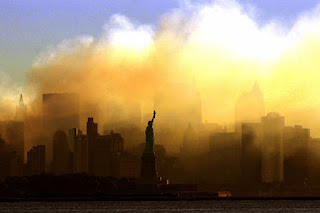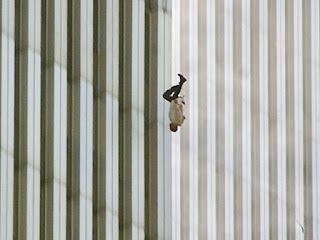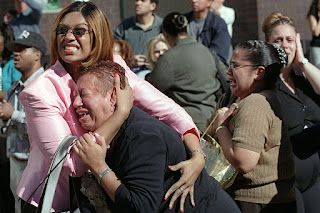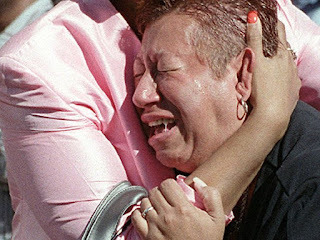1. The challenges I encountered while taking the photos trying to follow the rules was probably trying really hard to take good photos and trying to follow the rules.
2. I was thinking mostly of focusing the camera and making the photos not super bright. I had a problem with that.
3. Yes I would do the photo shoot over again because it was a hard assignment for me.
4. The things I would do the same is picking the right classes to shoot at.
5. The rule I will achieve easily will probably be Framing.
6. The hardest rule to achieve was lines.
7. The rule that is mostly not clear to me is probably the rule of thirds. I will probable have to do research on that rule.
Wednesday, September 28, 2016
Friday, September 23, 2016
Great Black & White Photographers Part 2
Irving Penn
*Irving Penn was born in New Jersey in 1917.*He was an american photographer who worked for Vogue.
*He was mostly known for fashion photography.
*He attended The University of Arts in 1938.


*He wrote many books about the arts and fashion and his drawings.
*He once won the Hasselblad Award
*He worked for many A list Celebrities
 *He died in 2009 from old age. He was 92 years old.
*He died in 2009 from old age. He was 92 years old.
Wednesday, September 21, 2016
Photo Manipulation Ethics
A. Some of the main points I read is that in most magazines the photos may be photoshopped.
B. They know people will believe what they see.
B. They know people will believe what they see.
 |
| Most ethnical because the man with the gun is holding the people hostage. |
Academic Shoot
 |
| Balance 1. The composition rule is balance 2. In this photo the rule of balance is being shown by having the main subject balanced. 3. The main subject is being balanced in the frame. 4. Maybe I could have changed the photo because it is a lot like the simplicity rule photo. |
 |
| Lines 1. The composition rule being shown is Lines. 2. In this photo the main subject is the students working on a class lab. 3. Lines are being shown in this photo. 4. Maybe I could have taken the photo from a different angle. |
 |
| Framing 1. The rule I was trying to show was framing. 2. Main subject is the people working. 3. It is in the frame. 4. I could have taken this photo from a different angle. |
Wednesday, September 14, 2016
 |
| Filling the Frame. |
 |
| Action and Emotion. |
 |
| The Story. |
The photo I picked from the category 'Academics & Community Services' shown in birds eye view, looking down out a boy climbing a rock wall and his peers are looking at him from behind.
1. I picked this photo because the boy looked very determined and motivated.
2. The Rules of Photography shown in this photo is rule of thirds.
1. I can take photos like the ones I saw today in classrooms with a lot of action in them.
2. I'm not very sure on whose class I want to visit yet. It might be my science teacher Ms.Harding.
3. I'll try to get a lot of action and emotions in my photo when I go out to shoot.
Monday, September 12, 2016
Post Shoot reflection
1. I tried to make my photos original, but I did not follow the good picture taking guidelines.
2. I wanted to make the photos as focused as possible so it took me a while to capture each picture, and also trying to make the frame equal.
3. Yes I would definitely do this project over again so I could do it correctly. I want to follow the rules and guidelines to photography.
4. The same things I would do is to make sure the picture framing and focusing is good.
5. I think I achieved the angles.
6. No, I am not very interested in shooting the same prompts again because I want something new to shoot.
2. I wanted to make the photos as focused as possible so it took me a while to capture each picture, and also trying to make the frame equal.
3. Yes I would definitely do this project over again so I could do it correctly. I want to follow the rules and guidelines to photography.
4. The same things I would do is to make sure the picture framing and focusing is good.
5. I think I achieved the angles.
6. No, I am not very interested in shooting the same prompts again because I want something new to shoot.
Friday, September 9, 2016
 This photo looks well framed because it looks very equal.
This photo looks well framed because it looks very equal. Lines is shown in this photo by showing the parallel lines in the background.
Lines is shown in this photo by showing the parallel lines in the background. Rule of Thirds is shown in this photo by showing that the group of people are in the 'rule of thirds' frame.
Rule of Thirds is shown in this photo by showing that the group of people are in the 'rule of thirds' frame. Avoiding Merges is shown in this photo because a lot of things in this photo is being cut of compared to the original photo.
Avoiding Merges is shown in this photo because a lot of things in this photo is being cut of compared to the original photo.
Friday, September 2, 2016
The Camera
1.Camera obscure was the first camera. It was achieved by having a hole that was similar to a camera lens. It focused and projected light onto the wall in the dark room.
Lenses and Optics
2.In the 17th century Isaac Newton and Christian Huygens made high quality glass lenses which made it one step closer to the modern day camera.
3.In 1887, Niepce created the first modern camera. He added film that contained a glass lens and a dark box.
4. Modern cameras are a like with Niepce's camera. Light passes through the lens and exposes the film.
5.Digital cameras use an electronic sensor called a CCD. Images are then stored in the memory.
Camera Modes
6.The difference between the Auto mode and the Program mode is that auto program controls flash and capture. Program mode lets the camera user have all of the control.
7.The portrait mode uses the fastest available lens setting to make sure there is not blur in your photo.
The sports mode is used for freezing motion.
The Half Press
8You should do a half press on the capture button so it can have more control and focus and faster camera response time.
Controlling Flash
9&10.This symbol means that flash will not be used. The next symbol is used when flash is being used.
Introduction to Exposure
11.You use exposure to make the light in your photo stable.
12.If there is not enough light you can use exposure to lighten up your photo.
The Universal Stop
14.A "stop" is a term used for the change in brightness.
15. 1
16. 2
Shutters and Aperture
17. Give much more light to the film if longer.
18. Gives much less life if shorter.
19. Aperture lets light go though when photo is about to capture.
20. Gives more light.
1.Camera obscure was the first camera. It was achieved by having a hole that was similar to a camera lens. It focused and projected light onto the wall in the dark room.
Lenses and Optics
2.In the 17th century Isaac Newton and Christian Huygens made high quality glass lenses which made it one step closer to the modern day camera.
3.In 1887, Niepce created the first modern camera. He added film that contained a glass lens and a dark box.
4. Modern cameras are a like with Niepce's camera. Light passes through the lens and exposes the film.
5.Digital cameras use an electronic sensor called a CCD. Images are then stored in the memory.
Camera Modes
6.The difference between the Auto mode and the Program mode is that auto program controls flash and capture. Program mode lets the camera user have all of the control.
7.The portrait mode uses the fastest available lens setting to make sure there is not blur in your photo.
The sports mode is used for freezing motion.
The Half Press
8You should do a half press on the capture button so it can have more control and focus and faster camera response time.
Controlling Flash
9&10.This symbol means that flash will not be used. The next symbol is used when flash is being used.
Introduction to Exposure
11.You use exposure to make the light in your photo stable.
12.If there is not enough light you can use exposure to lighten up your photo.
The Universal Stop
14.A "stop" is a term used for the change in brightness.
15. 1
16. 2
Shutters and Aperture
17. Give much more light to the film if longer.
18. Gives much less life if shorter.
19. Aperture lets light go though when photo is about to capture.
20. Gives more light.
Subscribe to:
Comments (Atom)








 Square
Square
